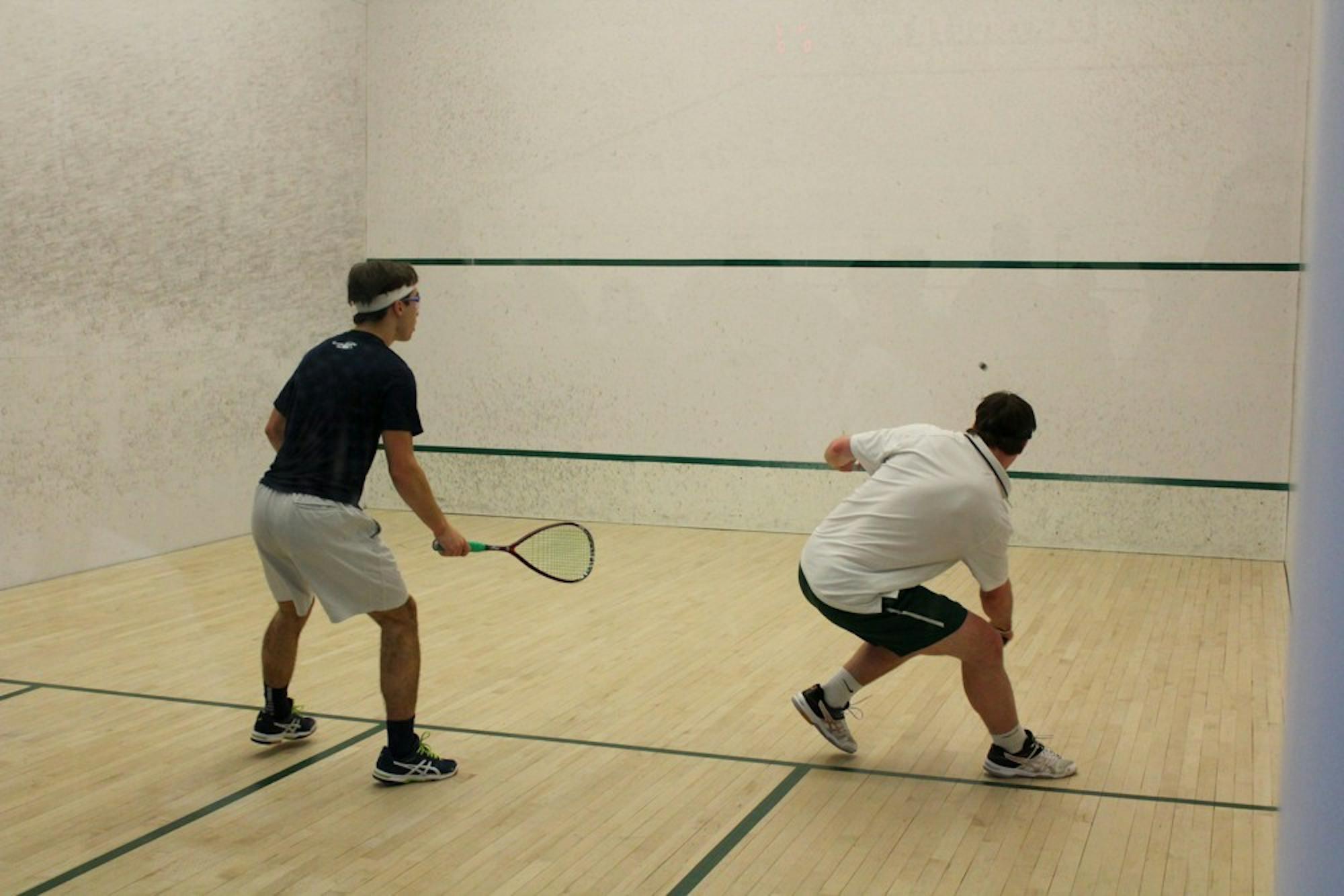If chess were a sport, how would it be played? According to Annie Blasberg ’20, it might look a little like “tennis in a box” — or as it’s commonly known, squash.
Squash originated at Harrow School, an elite English boarding school, in the 1830s as a faster, more varied version of racquetball. Originally played on racquetball courts, the new sport gained traction, and official squash courts appeared at Harrow in the 1860s. The sport gained national recognition by the 1890s, and the first professional championship took place in England in 1920.
The United States Squash Racquet Association was founded in 1907 in Philadelphia, Pennsylvania and now organizes tournaments on a national level. Today, squash is an international sport especially popular in Egypt and its country of origin, England. For decades, it was a gentleman’s sport confined to the white elite. But through recent outreach efforts such as after-school programs like New York City’s CitySquash and Philadelphia’s SquashSmarts, squash is moving begun to push squash beyond its country club stereotype.
Squash is a racquet sport played with a small ball about 1.5 inches in diameter. As in tennis, the goal is to get one’s opponent to miss the ball or to arrive at the ball after it bounces twice. Unlike tennis, however, the court is bounded by four walls. In order to continue a rally, a player hits the ball before it bounces twice on the floor. That hit must strike the front wall and stay within bounds.
A legal shot can take many forms: a drive or rail, which goes straight down the court and hits the front wall; a drop shot, which is a short, slow shot played in the first two quarters of the court; a cross-court, which is hit across the court; a boast, which hits the side or back wall before hitting the front wall; a lob, which is high and slow when it hits the front wall and bounces to the back of the court; or a nick, which hits the intersection of any sidewall with the floor and allows the ball to roll parallel to the floor, ending the rally with one shot.
Players aim to play from the center of the court — called “controlling the T.” The player controlling the point plays from the center and aims to hit the ball to the corners, forcing his or her opponent to retrieve the ball from the furthest possible point.
Squash is highly strategic. Players practice tactics to position their opponent in the court and to decide on the most appropriate shots to take. Talented athletes can make a very mentally and physically taxing game look effortless. “It’s a combination of athleticism and technique,” Leyton Johnston ’20 said. “Squash is a huge mental game. You could be the most physically gifted and most technically gifted squash player in the world, but if you don’t know how to approach the game properly, what shots to hit, you won’t win.”
Squash players often find themselves explaining the intensity of the game to many people. The biggest advantage a squash player can have is “[The] ability to be on the court for a while and be in shape really helps,” Julia Potter ’20 said. “You can learn how to hit a specific shot, but if you’re not able to fight and stay out there,” it will be difficult to compete.
Hailing from Boston, Blasberg picked up squash with her family at a young age and continued to play throughout high school. But playing for Dartmouth has been a completely new experience.
“Playing on the team [at Dartmouth] is a lot different than junior squash because it’s like a team rather than playing individually,” Blasberg said. “It’s nice taking an individual sport and adding the team component and playing against different schools where it’s not just about you, it’s about playing for the school.”
Dartmouth’s squash team is small, with 14 players on the men’s team and 15 on the women’s side. Every year, the team recruits about three athletes and takes several walk-ons. During the November to March season, players train six days a week with additional morning practices.
Because squash is not recognized by the NCAA, schools with varsity teams are not separated into divisions. Instead, National Championships are held each year, with the top eight teams in the College Squash Association rankings facing off in a tournament for the national title. Regular season and postseason matches are conducted head-to-head, with nine to 10 players from each school facing off. A school must take five out of the nine matches to win.
Since the Ivy League Scrimmages in November, Dartmouth — currently No. 9 on both the men’s and women’s sides — has been striving to improve its ranking in order to make the cut for nationals.
The team’s next home game will be on Saturday, Feb. 4 against Cornell University, Sunday, Feb. 5 against Columbia University, and on Wednesday, Feb. 8 against Williams College.




